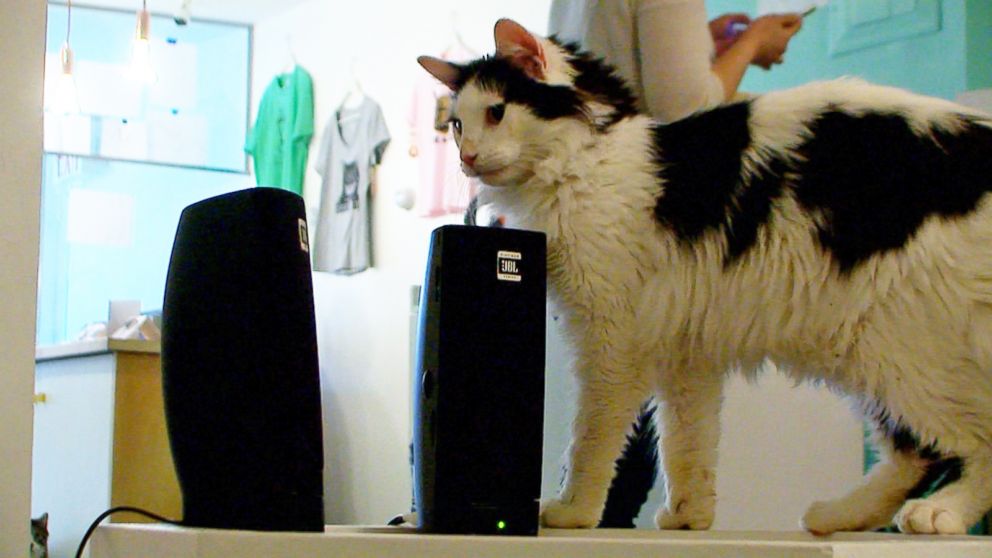Apr 7, 2015
We’re all too familiar with cat videos on the Internet. The cats are
seen playing or dancing to music with the help of their loving owners.
But do cats actually enjoy music?
David Teie, a lecturer at the University of Maryland who composes music for cats, says he believes they do, or at least display preferences.
Cats do not particularly enjoy the music they’re dancing along to in popular YouTube videos, he said. But that doesn’t mean they aren’t musically minded, as Teie found out.
“Any cat person knows each cat has its own personality, and it makes sense that it translates into musical taste,” Teie said.
Animal-lover Teie, an accomplished cellist, wanted to find a sound that
appeals to cats. After co-authoring a study about how animals react to
music, Teie released three singles made specifically for cats.
The music, made to calm and soothe the felines, imitates the pitch and
tempo of sounds that naturally appeal to them. Teie says a compilation
of sounds such as purring, suckling and bird calls is formed to create
“cat music.”

“I can see the cats are really curious about it,” said Christina Ha, the
co-founder of Meow Parlour, a cat café in New York City.
Meow Parlour houses cats for adoption. People can pay to play and
interact with the cats, who live in the shop. Ha played the music for
her cats to see how they would respond.
“I heard a lot of low cello music and bass,” Ha said. “I think they really like that.”
Over the course of an hour recently, the cats at Ha’s café jumped up
next to the speakers. They stood close, seemingly listening to Teie’s
compositions.

“I think it’s a great idea,” Niki Krieg, a visitor at the café, said.
“It’s the same way for humans, how sometimes you put on a song and you
automatically enter a zone of Zen, calm. So I see how it can work for
other animals.”
Some cats fell asleep, while others stood near the music or played with each other close to the speakers.
“In human music we basically have notes, just single discrete notes,”
Teie said. “This is the way cat melodies sound, because they don’t have
language and consonants to separate their sounds.”

To test the music, Teie partnered with Charles Snowdon from the University of Wisconsin- Madison. Snowdon and his team visited 47 cats at 23 different homes and played the music to observe the results.
Positive responses included “things like going toward the speaker,
nuzzling the speaker, purring," Teie said. "They do scent-marking when
they like something, so they rub up against it."
As for what this all means, Teie says it’s about breaking communication barriers.
“Not only can we care for [cats] better, but we can understand them
better,” Teie said. “You have to understand their communication in order
to write like this.”

No comments:
Post a Comment